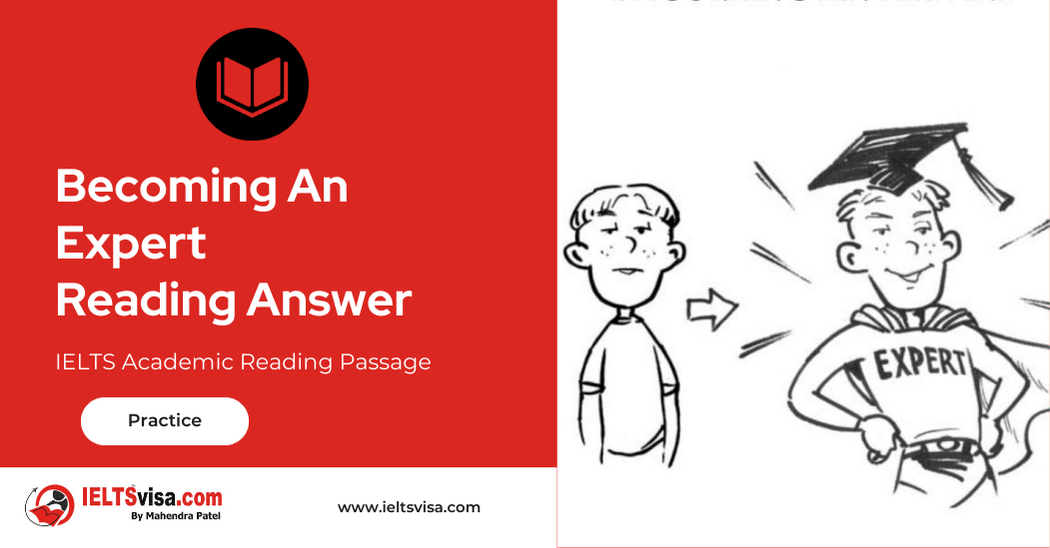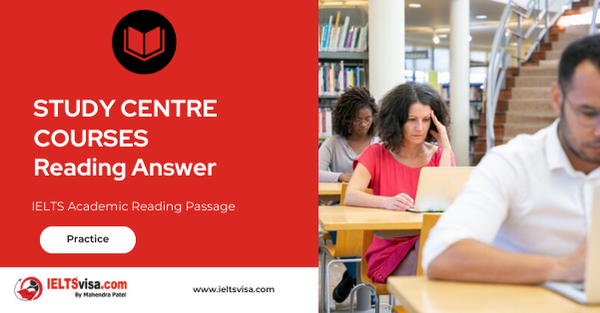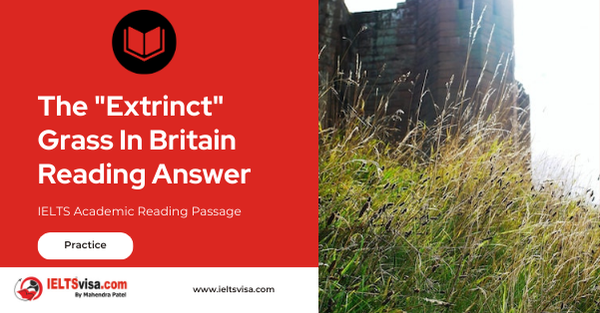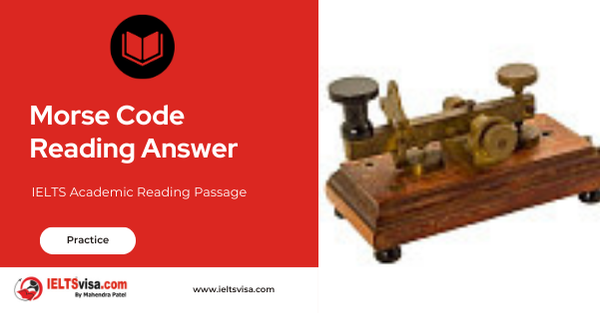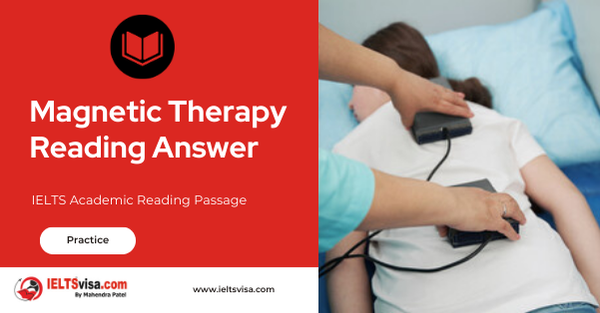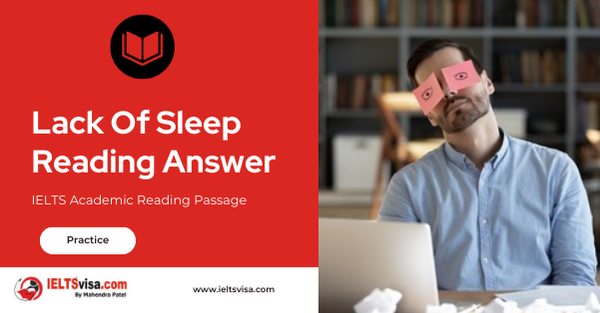How Should Reading Be Taught? Reading Answer
IELTS Academic Reading Passage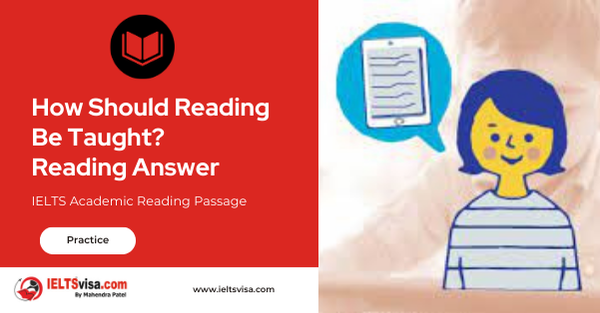
By Keith Rayncr a Barbara R Foorman
A
Learning to speak is automatic for almost all children, but learning to read requires elaborate instruction and conscious effort. Well aware of the difficulties, educators have given a great deal of thought to how they can best help children learn to read. No single method has triumphed. Indeed, heated arguments about the most appropriate form of reading instruction continue to polarize the teaching community.
B
Three general approaches have been tried. In one, called whole-word instruction, children learn by rote how to recognise at a glance a vocabulary of 50 to 100 words. Then they gradually acquire other words, often through seeing them used over and over again in the context of a story.
Speakers of most languages learn the relationship between letters and the sounds associated with them (phonemes). That is, children are taught how to use their knowledge of the alphabet to sound out words. This procedure constitutes a second approach to teaching reading – phonics.
Many schools have adopted a different approach: the whole-language method. The strategy here relies on the child’s experience with the language. For example, students are offered engaging books and are encouraged to guess the words that they do not know by considering the context of the sentence or by looking for clues in the storyline and illustrations, rather than trying to sound them out.
Many teachers adopted the whole-language approach because of its intuitive appeal. Making reading fun promises to keep children motivated, and learning to read depends more on what the student does than on what the teacher does. The presumed benefits of whole-language instruction – and the contrast to the perceived dullness of phonics – led to its growing acceptance across American during the 1990s and a movement away from phonics.
C
However, many linguists and psychologists objected strongly to the abandonment of phonics in American schools. Why was this so? In short, because research had clearly demonstrated that understanding how letters related to the component sounds in words is critically important in reading. This conclusion rests, in part, on knowledge of how experienced readers make sense of words on a page. Advocates of whole-language instruction have argued forcefully that people often derive meanings directly from print without ever determining the sound of the word. Some psychologists today accept this view, but most believe that reading is typically a process of rapidly sounding out words mentally. Compelling evidence for this comes from experiments which show that subjects often confuse homophones (words that sound the same, such as Jrose and ‘rows5). This supports the idea that readers convert strings of letters to sounds.
D
In order to evaluate different approaches to teaching reading, a number of experiments have been carried out, firstly with college students, then with school pupils. Investigators trained English-speaking college students to read using unfamiliar symbols such as Arabic letters (the phonics approach), while another group learned entire words associated with certain strings of Arabic letters (whole-word). Then both groups were required to read a new set of words constructed from the original characters. In general, readers who were taught the rules of phonics could read many more new words than those trained with a whole-word procedure.
Classroom studies comparing phonics with either whole-word or whole-language instruction are also quite illuminating. One particularly persuasive study compared two programmes used in 20 first-grade classrooms. Half the students were offered traditional reading instruction, which included the use of phonics drills and applications. The other half were taught using an individualised method that drew from their experiences with languages; these children produce their own booklets of stories and developed sets of words to be recognised (common components of the whole-language approach). This study found that the first group scored higher at year’s end on tests of reading and comprehension.
E
If researchers are so convinced about the need for phonics instruction, why does the debate continue? Because the controversy is enmeshed in the philosophical differences between traditional and progressive (or new) approaches, differences that have divided educators for years. The progressive challenge the results of laboratory tests and classroom studies on the basis of a broad philosophical skepticism about the values of such research. They champion student-centred learned and teacher empowerment. Sadly, they fail to realise that these very admirable educational values are equally consistent with the teaching of phonics.
F
If schools of education insisted that would-be reading teachers learned something about the vast research in linguistics and psychology that bears on reading, their graduates would be more eager to use phonics and would be prepared to do so effectively. They could allow their pupils to apply the principles of phonics while reading for pleasure. Using whole- language activities to supplement phonics instruction certainly helps to make reading fun and meaningful for children, so no one would want to see such tools discarded. Indeed, recent work has indicated that the combination of literature-based instruction and phonics is more powerful than either method used alone.
Teachers need to strike a balance. But in doing so, we urge them to remember that reading must be grounded in a firm understanding of the connections between letters and sounds. Educators who deny this reality are neglecting decades of research. They are also neglecting the needs of their students.
Questions 1-5
Reading Passage has six sections, A-F.
Choose the correct heading for sections B-F from the list of headings below.
Write the correct number, i-ix, in boxes 1-5 on your answer sheet.
List of Headings
i Disagreement about the reading process
ii The roots of the debate
iii A combined approach
iv Methods of teaching reading
v A controversial approach
vi Inconclusive research
vii Research with learners
viii Allowing teachers more control
ix A debate amongst educators
Example
Section A ix
- Section B
- Section C
- Section D
- Section E
- Section F
Questions 6-10
Do the following statements agree with the information given in Reading Passage? In boxes 6-10 on your answer sheet, write
TRUE if the statement agrees with the information FALSE if the statement contradicts the information NOT GIVEN if there is no information on this
6 The whole-language approach relates letters to sounds.
7 Many educators believe the whole-language approach to be the most interesting way to teach children to read.
8 Research supports the theory that we read without linking words to
sounds.
9 Research has shown that the whole-word approach is less effective than
the whole-language approach.
10 Research has shown that phonics is more successful than both the
whole-word and whole-language approaches.
Questions 11-14
Complete the summary of sections E and F using the list of words, A-G, below.
Write the correct letter, A-G, in boxes 11-14 on your answer sheet.
In the teaching community, 11…………….. question the usefulness of research into
methods of teaching reading. These critics believe that 12………….. is incompatible with
student-centred learning. In the future, teachers need to be aware of 13…………….. so
that they understand the importance of phonics. They should not, however, ignore the ideas of 14…………….. which make reading enjoyable for learners.
A the phonics method
B the whole-word method
C the whole-language method
D traditionalists
E progressives
F linguistics
G research studies

Solution for: How Should Reading Be Taught? Reading Answer
| 1. iv | 8. FALSE |
| 2. i | 9. NOT GIVEN |
| 3. vii | 10. TRUE |
| 4. ii | 11. E |
| 5. iii | 12. A |
| 6. FALSE | 13. G |
| 7. TRUE | 14. C |
Review and Practice
- Regularly practice with IELTS reading samples and time yourself to get used to the pressure of the exam.
- Review your mistakes to understand where you went wrong and how to avoid similar errors in the future.
Our Books
Master IELTS Speaking Part 1
IELTS Writing Task 1 Book
IELTS Writing Task 2 Book
How Should Reading Be Taught? Reading Answer Explanation
Comin Soon
Practice IELTS Other Modules
IELTS Listening
The IELTS Listening test assesses how well you can understand spoken English in various contexts. It lasts about 30 minutes and is divided into four sections with a total of 40 questions. The listening tasks become increasingly difficult as the test progresses.
IELTS Academic Reading
The IELTS Academic Reading section assesses your ability to understand and interpret a variety of texts in academic settings. It is designed to evaluate a range of reading skills, including skimming for gist, reading for main ideas, reading for detail, understanding inferences, and recognizing a writer's opinions and arguments.
IELTS Speaking
The IELTS Speaking test assesses your ability to communicate in English on everyday topics. It lasts 11-14 minutes and consists of three parts: introduction, cue card, and a discussion based on the cue card topic.
IELTS General Reading
IELTS General Reading tests your ability to understand and interpret various types of texts. Here are some key areas and types of content you can expect to encounter in the reading section, along with tips for effective preparation.
IELTS Academic Writing Task 1
In IELTS Academic Writing Task 1, you are presented with a visual representation of information, such as graphs, charts, tables, or diagrams, and you are required to summarize, compare, or explain the data in your own words.
IELTS General Writing Task 1
In IELTS General Writing Task 1, you are required to write a letter based on a given situation. The letter can be formal, semi-formal, or informal, depending on the prompt. Here’s a breakdown of the key components to include in your letter
IELTS Academic Writing Task 2
In IELTS Academic Writing Task 2, you are required to write an essay in response to a question or topic. Here’s a guide to help you understand the essential elements of this task
IELTS Exam Tips
To succeed in the IELTS exam, practice regularly, familiarize yourself with the test format, improve your vocabulary, develop time management skills, and take mock tests to build confidence.
Grammer for IELTS
Grammar is the foundation of effective communication in English. Understanding tense usage, subject-verb agreement, and sentence structure enhances clarity and coherence in writing and speaking.
Vocabulary for IELTS
Vocabulary plays a crucial role in the IELTS (International English Language Testing System) exam, especially in the Speaking and Writing sections. Here’s an overview of why vocabulary is important and how it impacts your performance
RECENT IELTS SAMPLES QUESTIONS AND ANSWERS
Becoming An Expert Reading Answer
A Expertise is commitment coupled with creativity. Specifically, it is the commitment of...
STUDY CENTRE COURSES Reading Answer
SELF-STUDY TIPS AHowever difficult you find it to arrange your time, it will pay off in the...
The Extrinct Grass In Britain Reading Answer
A The British grass interrupted brome was said to be extinct, just like the Dodo. Called...
Morse Code Reading Answer
A. A new satellite-based system is being implemented to replace Morse code for sending...
Magnetic Therapy Reading Answer
AMagnetic therapy, which is a $5-billion market worldwide, is a form of alternative medicine...
Lack Of Sleep Reading Answer
Section A It is estimated that the average man or woman needs between seven-and-a-half and...

